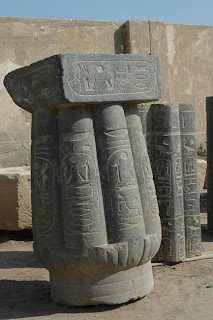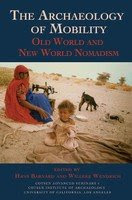Times Higher Education (By Matthew Reisz)
Archaeology's ability to reveal the truth untainted by political, cultural and nationalist bias remains a matter for heated debate. Matthew Reisz reports
There is a dark side to archaeology that is seldom acknowledged in Indiana Jones films; namely a long tradition of using excavations to prop up nationalist and colonial claims; to confirm (or occasionally challenge) the truth of religious and classical texts; and to present an idealised picture of groups seen as "ancestors".
Things get particularly fraught in relation to the Middle East and "biblical archaeology", yet the same fundamental issues - ethical, political and methodological - apply all the way from Maiden Castle to Machu Picchu.
In the Balkans, argues Evangelos Kyriakidis, lecturer in archaeology at the University of Kent, "archaeology has been very significant for national identity". It "played an important role in 19th-century international sympathy towards the Greek national cause; today, the Kosovo issue has important archaeological extensions. Both Greece and the former Yugoslav republic of Macedonia use archaeology in their arguments against each other."
But can archaeologists working outside war zones remain immune to ideological influences, conscious or unconscious, which direct them towards what to look for and then convince them that they have found it?
Even if individuals inevitably have their biases and blind spots, can the discipline as a whole incorporate the kind of self-correcting mechanisms we find in the other sciences? Can it offer us any kind of objective truth, however partial and tentative, about the past - or will it always be tainted by politics?
In 1985, Richard Wilk, now professor of anthropology and gender studies at Indiana University, published a paper, The Ancient Maya and the Political Present, which clearly hit a raw nerve. "It was widely derided at the time," he says. "Some Mayan archaeologists still won't talk to me."
Wilk's argument was simple: there is no written evidence for classic Maya culture or its "collapse", so any theories have to be based on archaeology. Many different ones have been put forward. Yet all of them, Wilk argued (and even illustrated with a graph), reflected current concerns: "almost every trend of importance in recent United States history finds some reflection ... in learned analyses of the rise and fall of ancient Maya civilisation".
The Vietnam War, the vogue for hallucinogenic drugs, environmentalism, the women's movement, and anxieties about population growth or "big government" all subliminally affected how scholars accounted for the end of the Maya, Wilk said.
Wilk claimed that our images of the past were influenced by the present - and that this was a good thing. "If the past bore no relation to the present," he argued, "it would be dreadfully boring, even to archaeologists."
The stories we want to hear about prehistory are those that either legitimise present courses of action or offer warnings about what we should not do. Although Wilk denied that he was taking the extreme position that "archaeologists are just making up stories about the past", he was certainly undermining any straightforward claims that they could offer us direct access to prehistory.
This view is supported by Adam Stout, research fellow in archaeology at the University of Wales, Lampeter, and author of Creating Prehistory: Druids, Ley Hunters and Archaeologists in Pre-war Britain (2008). He worries about the naive view that "better science, better technology, better recording, better techniques will give us an ever more accurate understanding of the past". Although "archaeology today is a broad and on the whole very tolerant church," he says, he fears that "the beasts are gathering".
"Archaeology is being driven towards the disciplinary stockade, with the results-driven, answers-not-questions ethos so apparent in TV archaeology, in developer-driven archaeology and increasingly within academic archaeology as archaeologists struggle with research assessment exercise delivery schedules and the need to be seen as productive."
So do archaeological methods reveal any sort of truth about the past? Stout is cautious. "The past is a devious, amorphous entity," he says, "very resistant to being skewered by posterity. Nothing about it stays still for long, from the tiniest detail to the grandest of grand narratives; it gets constantly rewritten and re-interpreted. I do think that archaeology is essentially a hall of mirrors - but none the less valid for that. Mirrors are interesting things."
Some argue that archaeology is becoming more genuinely scientific and objective. Margarita Diaz-Andreu, leader of the history of archaeology research group at Durham University, makes a distinction between the questions archaeologists ask, which are "very much influenced by our own experiences as people", and the rigour of their methods. "There are more and more techniques/scientific approaches in archaeology to answer our questions," she says.
Others dispute this. Ethan Cochrane, lecturer in archaeology at University College London, argues that "there is no archaeological science (yet). (We) use other sciences to explain various aspects of artefacts, asking questions such as: where did the raw materials for this artefact come from? How old is this piece of pottery? What is the isotopic signature of this bone? But the science behind these investigations is not archaeology - it is chemistry, physics and biology. Archaeologists take the answers and use them as data to weave stories about the past."
But what happens when outsiders start to "weave stories" about other groups of people? Cochrane is a specialist in the Pacific Islands and notes that in Fiji, where the local people have political power and own most of the land, "their position is not threatened by anything my research might say".
In Hawaii, by contrast, "the native population is a colonised and oppressed group", while archaeology "is practised largely by whites and in the context of commercial/rescue archaeology in a scientific vein ... Many see archaeology as yet another act of colonisation and an affront to Hawaiian culture - white people telling Hawaiians what their history means. Archaeology in Hawaii is highly political, as one might imagine, when international corporations owned by non-Hawaiians build luxury hotels and in the process disturb Hawaiian burial grounds."
A more striking example is provided by Egypt, argues Lynn Meskell, professor of anthropology at Stanford University. The tourist trade demands Nile cruises, luxury hotels and beautifully presented archaeological sites. Many Egyptians, meanwhile, are expected to provide local colour by living in picturesque poverty or performing a pantomime version of Ancient Egypt in a reconstructed pharaonic village. This has made tourism a source of resentment and even violence - and archaeology can hardly claim neutrality.
See the above page for the full story, plus readers' comments.
It was a productive week for Mamdouh in the north end of the new square. On the left and right, mud brick walls (Ptolemaic or Roman) discovered in an earlier season run east to the gate, whose north wing can be seen in the background. By the end of the week we had found a third east-west wall between them, partially cut by a later pit. Against its south side is a large pottery bin or jar set in a neat frame of packed mud or mud brick.
 The Djehuty project is going ahead, with both restoration and excavation work being carried out at the same time. Photographs on the blog give a real insight into how detailed the restoration work actually is. The excavation work continues to reveal levels of complexity with more work needed to resolve some of the essential questions about the site. The work in the burial chamber, for example, has produced ceramics from the superficial levels dating from Ramesside, 28th Dynasty and Saite periods. They are waiting to see what deeper levels will produce. Excavation in the entrance to the tomb also proceeds, albeit slowly due to the difficulties of the conditions encountered.
The Djehuty project is going ahead, with both restoration and excavation work being carried out at the same time. Photographs on the blog give a real insight into how detailed the restoration work actually is. The excavation work continues to reveal levels of complexity with more work needed to resolve some of the essential questions about the site. The work in the burial chamber, for example, has produced ceramics from the superficial levels dating from Ramesside, 28th Dynasty and Saite periods. They are waiting to see what deeper levels will produce. Excavation in the entrance to the tomb also proceeds, albeit slowly due to the difficulties of the conditions encountered.










